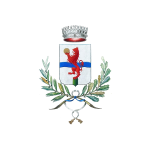Oasi WWF Il Verneto
Address: 14030 Rocchetta Tanaro AT, Italia
Oasi WWF.
Insights
Comune di Rocchetta Tanaro
https://www.comune.rocchettatanaro.at.it/
- Riserva Naturale "IL VERNETO"
https://www.comune.rocchettatanaro.at.it/it/page/riserva-naturale-il-verneto
See also...
• Rocchetta Tanaro tourist guide
• Municipium, the App of your Municipality

